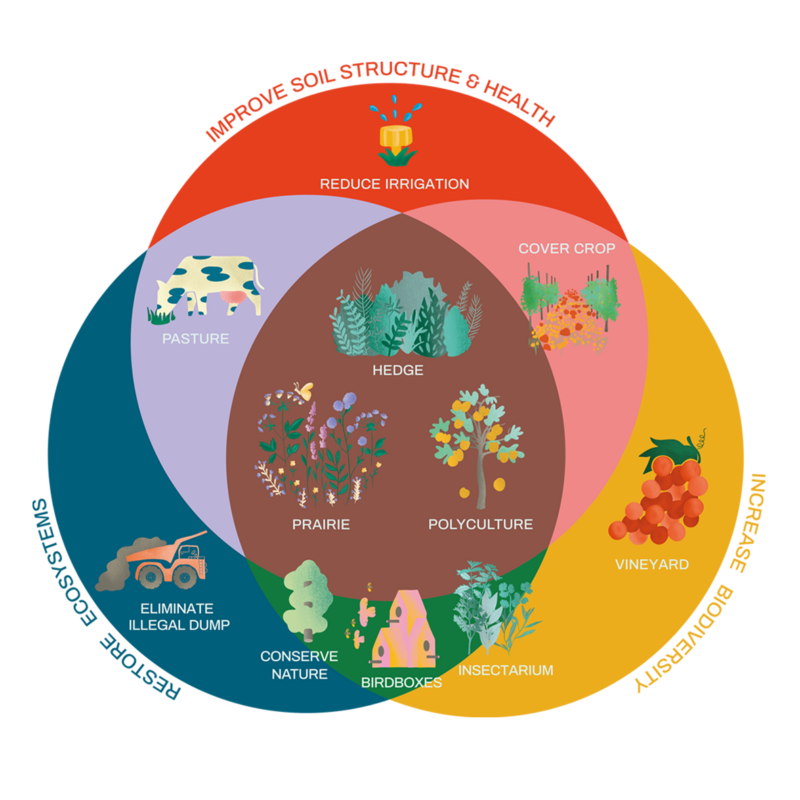As we stand at the threshold of a generational handover, it’s important to reflect and shape the future of agriculture for the coming decades. The pace of change is rapid, and we believe a significant transformation is essential to meet the needs of our planet and fulfill individual aspirations.
Rather than dedicating our efforts to eliminating harmful species, let’s focus on encouraging beneficial ones that can naturally inhibit the growth of unwanted species. By introducing or allowing the growth of certain plant species alongside traditional crops like vines, we enrich the soil and increase its carbon and nitrogen content.
For us, this represents a new agricultural revolution, addressing the challenges of the future by prioritizing ecosystem resilience at the core of farming practices.
What is Regenerative Agriculture?
Regenerative agriculture is a philosophy advocating a new agricultural approach capable of :
Why store carbon in the soil? This process, known as sequestration, involves the soil absorbing more carbon than it emits, helping to combat climate change and improve soil health.
Why improve water management? Effective water management ensures the sustainable use of freshwater resources, vital for maintaining our ecosystems and supporting human activities.
Why cultivate the richness of our natural habitats? Preserving biodiversity is crucial for maintaining ecological balance and ensuring the sustainability of ecosystems for future generations.
This philosophy involves harnessing the power of nature rather than working against it by placing the resilience of ecosystems at the heart of the farmer’s profession. It’s a holistic approach involving a set of practices aimed at enhancing soil structure and health, increasing biodiversity, and restoring ecosystems. As you will see when visiting our trail at Bellecoste, in an ecosystem, each species plays a role in an interconnected network.
How do we implement this?
And what methods do we use ? Here’s a diagram that will help you better understand our approach to regenerative agriculture.

Illustration : Laurie – Bilden Studio
To enter our website, you must be of legal drinking age in your country.